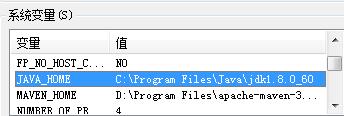The difference between rake db:migrate and rake db:reset is pretty clear in my head. The thing which I don\'t understand is how rake db:schema:load different from the former two.
Just to be sure that I am on the same page:
rake db:migrate - Runs the migrations which haven\'t been run yet.rake db:reset - Clears the database (presumably does a rake db:drop + rake db:create + rake db:migrate) and runs migration on a fresh database.
Please help to clarify, if my understanding has gone wrong.
- db:migrate runs (single) migrations that have not run yet.
- db:create creates the database
- db:drop deletes the database
db:schema:load creates tables and columns within the (existing) database following schema.rb
db:setup does db:create, db:schema:load, db:seed
- db:reset does db:drop, db:setup
Typically, you would use db:migrate after having made changes to the schema via new migration files (this makes sense only if there is already data in the database). db:schema:load is used when you setup a new instance of your app.
I hope that helps.
UPDATE for rails 3.2.12:
I just checked the source and the dependencies are like this now:
- db:create creates the database for the current env
- db:create:all creates the databases for all envs
- db:drop drops the database for the current env
- db:drop:all drops the databases for all envs
- db:migrate runs migrations for the current env that have not run yet
- db:migrate:up runs one specific migration
- db:migrate:down rolls back one specific migration
- db:migrate:status shows current migration status
- db:rollback rolls back the last migration
- db:forward advances the current schema version to the next one
- db:seed (only) runs the db/seed.rb file
- db:schema:load loads the schema into the current env\'s database
db:schema:dump dumps the current env\'s schema (and seems to create the db as well)
db:setup runs db:schema:load, db:seed
- db:reset runs db:drop db:setup
- db:migrate:redo runs (db:migrate:down db:migrate:up) or (db:rollback db:migrate) depending on the specified migration
- db:migrate:reset runs db:drop db:create db:migrate
For further information please have a look at https://github.com/rails/rails/blob/v3.2.12/activerecord/lib/active_record/railties/databases.rake (for Rails 3.2.x) and https://github.com/rails/rails/blob/v4.0.5/activerecord/lib/active_record/railties/databases.rake (for Rails 4.0.x)
TLDR
Use
rake db:migrate If you wanna make changes to the schema rake db:reset If you wanna drop the database, reload the schema from schema.rb, and reseed the databaserake db:schema:load If you wanna reset database to schema as provided in schema.rb (This will delete all data)
Explanations
rake db:schema:load will set up the schema as provided in schema.rb file. This is useful for a fresh install of app as it doesn\'t take as much time as db:migrate
Important note, db:schema:load will delete data on server.
rake db:migrate makes changes to the existing schema. Its like creating versions of schema. db:migrate will look in db/migrate/ for any ruby files and execute the migrations that aren\'t run yet starting with the oldest. Rails knows which file is the oldest by looking at the timestamp at the beginning of the migration filename. db:migrate comes with a benefit that data can also be put in the database. This is actually not a good practice. Its better to use rake db:seed to add data.
rake db:migrate provides tasks up, down etc which enables commands like rake db:rollback and makes it the most useful command.
rake db:reset does a db:drop and db:setup
It drops the database, create it again, loads the schema, and initializes with the seed data
Relevant part of the commands from databases.rake
namespace :schema do
desc \'Creates a db/schema.rb file that is portable against any DB supported by Active Record\'
task :dump => [:environment, :load_config] do
require \'active_record/schema_dumper\'
filename = ENV[\'SCHEMA\'] || File.join(ActiveRecord::Tasks::DatabaseTasks.db_dir, \'schema.rb\')
File.open(filename, \"w:utf-8\") do |file|
ActiveRecord::SchemaDumper.dump(ActiveRecord::Base.connection, file)
end
db_namespace[\'schema:dump\'].reenable
end
desc \'Loads a schema.rb file into the database\'
task :load => [:environment, :load_config, :check_protected_environments] do
ActiveRecord::Tasks::DatabaseTasks.load_schema_current(:ruby, ENV[\'SCHEMA\'])
end
# desc \'Drops and recreates the database from db/schema.rb for the current environment and loads the seeds.\'
task :reset => [ \'db:drop\', \'db:setup\' ]
namespace :migrate do
# desc \'Rollbacks the database one migration and re migrate up (options: STEP=x, VERSION=x).\'
task :redo => [:environment, :load_config] do
if ENV[\'VERSION\']
db_namespace[\'migrate:down\'].invoke
db_namespace[\'migrate:up\'].invoke
else
db_namespace[\'rollback\'].invoke
db_namespace[\'migrate\'].invoke
end
end
As far as I understand, it is going to drop your database and re-create it based on your db/schema.rb file. That is why you need to make sure that your schema.rb file is always up to date and under version control.
You could simply look in the Active Record Rake tasks as that is where I believe they live as in this file.
https://github.com/rails/rails/blob/fe1f4b2ad56f010a4e9b93d547d63a15953d9dc2/activerecord/lib/active_record/tasks/database_tasks.rb
What they do is your question right?
That depends on where they come from and this is just and example to show that they vary depending upon the task. Here we have a different file full of tasks.
https://github.com/rails/rails/blob/fe1f4b2ad56f010a4e9b93d547d63a15953d9dc2/activerecord/Rakefile
which has these tasks.
namespace :db do
task create: [\"db:mysql:build\", \"db:postgresql:build\"]
task drop: [\"db:mysql:drop\", \"db:postgresql:drop\"]
end
This may not answer your question but could give you some insight into go ahead and look the source over especially the rake files and tasks. As they do a pretty good job of helping you use rails they don\'t always document the code that well. We could all help there if we know what it is supposed to do.



